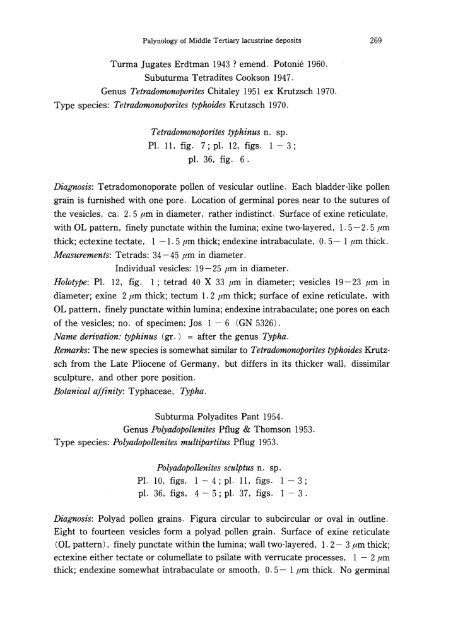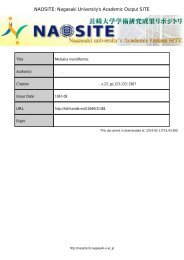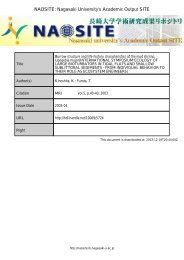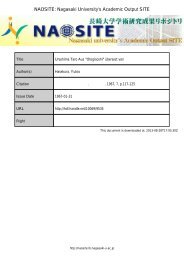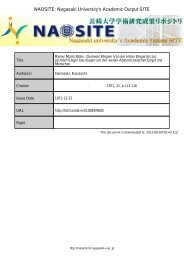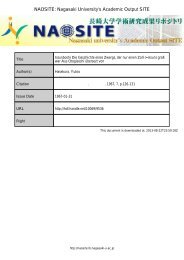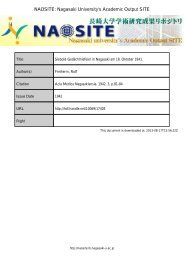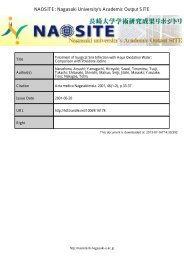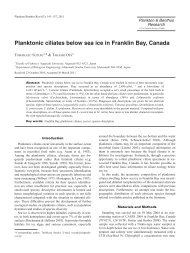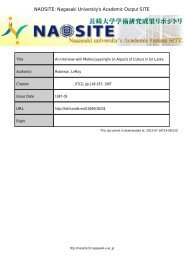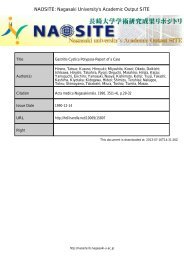Palynology of Middle Tertiary lacustrine deposits
Palynology of Middle Tertiary lacustrine deposits
Palynology of Middle Tertiary lacustrine deposits
You also want an ePaper? Increase the reach of your titles
YUMPU automatically turns print PDFs into web optimized ePapers that Google loves.
<strong>Palynology</strong> <strong>of</strong> <strong>Middle</strong> <strong>Tertiary</strong> <strong>lacustrine</strong> <strong>deposits</strong><br />
269<br />
Turma Jugates Erdtman 1943 ? emend. Potonie 1960.<br />
Subuturma Tetradites Cookson 1947.<br />
Genus Tetradomonoporites Chitaley 1951 ex Krutzsch 1970.<br />
Type species: Tetradomonoporites typhoides Krutzsch 1970.<br />
Tetradomonoporites typhinus n. sp.<br />
PI. 11, fig. 7; pI. 12, figs. 1 - 3 ;<br />
pI. 36, fig. 6.<br />
Diagnosis: Tetradomonoporate pollen <strong>of</strong> vesicular outline. Each bladder-like pollen<br />
grain is furnished with one pore. Location <strong>of</strong> germinal pores near to the sutures <strong>of</strong><br />
the vesicles, ca. 2.5 pm in diameter, rather indistinct. Surface <strong>of</strong> exine reticulate,<br />
with OL pattern, finely punctate within the lumina; exine two-layered, 1. 5- 2. 5 pm<br />
thick; ectexine tectate, 1 -1. 5 pm thick; endexine intrabaculate, 0.5- 1 pm thick.<br />
Measurements: Tetrads: 34 - 45 pm in diameter.<br />
Individual vesicles: 19 - 25 pm in diameter.<br />
Holotype: PI. 12, fig. 1; tetrad 40 X 33 pm in diameter; vesicles 19-23 pm in<br />
diameter; exine 2 pm thick; tectum 1.2 pm thick; surface <strong>of</strong> exine reticulate, with<br />
OL pattern, finely punctate within lumina; endexine intrabaculate; one pores on each<br />
<strong>of</strong> the vesicles; no. <strong>of</strong> specimen: Jos 1 - 6 (GN 5326).<br />
Name derivation: typhinus (gr.) = after the genus Typha.<br />
Remarks: The new species is somewhat similar to Tetradomonoporites typhoides Krutzsch<br />
from the Late Pliocene <strong>of</strong> Germany, but differs in its thicker wall, dissimilar<br />
sculpture, and other pore position.<br />
Botanical affinity: Typhaceae, TYPha.<br />
Subturma Polyadites Pant 1954.<br />
Genus Polyadopollenites Pflug & Thomson 1953.<br />
Type species: Polyadopollenites multipartitus Pflug 1953.<br />
Polyadopollenites sculptus n. sp.<br />
PI. 10, figs, 1 - 4; pI. 11, figs. 1 - 3;<br />
pI. 36, figs, 4 - 5; pI. 37, figs. I - 3 .<br />
Diagnosis: Polyad pollen grains. Figura circular to subcircular or oval in outline.<br />
Eight to fourteen vesicles form a polyad pollen grain. Surface <strong>of</strong> exine reticulate<br />
COL pattern), finely punctate within the lumina; wall two-layered, I. 2- 3 pm thick;<br />
ectexine either tectate or columellate to psilate with verrucate processes, I - 2 pm<br />
thick; endexine somewhat intrabaculate or smooth, 0.5- I pm thick. No germinal


